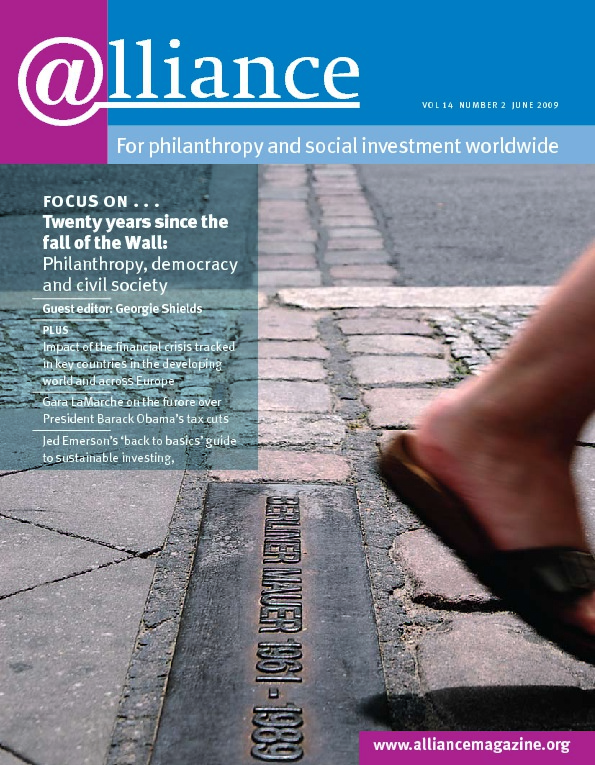Though we are experiencing the worst capital market crisis since the 1930s, the current reality is not wholly without its positive attributes. As we look to our economic future, we already see a renewal of practices rooted in our past – practices many of us overthrew in our collective drive to secure short-term returns.
These ‘back to the future’ practices are:
- Returning to the fundamentals
- Affirming the informed fiduciary
- Exchanging the hammer for a toolkit
Everyone now seems to know what we have always known but ignored until the capital market collapse taught us yet again: invest to create long-term value, know what you own, and don’t invest in things you don’t understand. Whether it’s the mystical financial prowess of Bernie or the ‘you just aren’t smart enough to understand how these are structured, but buy this anyway’ advice of those selling credit default swaps and ‘black box’ investment strategies, the core fact remains: you don’t need a high-priced adviser to tell you that you should not put your money with people who won’t show you how they generate returns on your investment. Full stop.
You wouldn’t give a grant to someone who couldn’t show you how they intended to create community value with it, so why, as a fiduciary, would you want to give your assets to managers when you don’t fully understand the investment strategy? There is no difference. If you don’t understand what you are being offered, then you shouldn’t give your money either to the clever financial manager or the charismatic social entrepreneur.
A return to fundamentals, however, also requires us to understand that our role as a fiduciary is to be as informed as possible about the performance of the organizations and funds for which we’re responsible. This may seem obvious but it is common to see boards where responsibility for various aspects of board management (finance, programme, etc) has devolved to certain members – in the case of finance, to those thought to ‘know finance’.
This is both helpful and understandable, but may mean the board frequently defers to those members with greater expertise instead of ensuring all members fully comprehend areas of critical organizational importance. I recall a time when the chair of a board I was on would regularly request other members with key operating responsibility in finance and programme areas give the full board quarterly ‘primers’ in their area of expertise. The intention wasn’t to make all members experts in all areas, but to ensure that all board members had a complete grasp of investments undertaken – both their structure and underlying, long-term risk. Today we must return to the ideal of the informed fiduciary. Some of the current crisis in philanthropy has its roots in poorly executed agency, the separation of duties, and the notion that ‘programme’ board members would be hard pressed to attain fluency in finance while finance members may only aspire to a vague and general grasp of the institution’s more complicated programme strategies.
 Finally, much of the recent popular conversation within philanthropy has focused on the size of one’s portfolio and sizzle of one’s grants. Any list of the ‘Top 100 Foundations’ or ‘World’s Greatest Philanthropists’ is commonly premised on rankings of how much money they have and the awesome size of a given grant. Popular philanthropy has come to be understood as simply the charitable act, not the value to be created through grantmaking strategies and effective management of foundation assets.
Finally, much of the recent popular conversation within philanthropy has focused on the size of one’s portfolio and sizzle of one’s grants. Any list of the ‘Top 100 Foundations’ or ‘World’s Greatest Philanthropists’ is commonly premised on rankings of how much money they have and the awesome size of a given grant. Popular philanthropy has come to be understood as simply the charitable act, not the value to be created through grantmaking strategies and effective management of foundation assets.
As the old saying goes, – or, in the case of philanthropy, if your only tool is a grant, the whole world looks like a charity case!
While we have of late seen increasing discussion regarding foundations supporting the advocacy efforts of grantees and making better use of foundation investments through, for example, impact and mission connected investing, far too many foundation trustees continue to see the role of their institution primarily as charitable and only secondarily as a financial engine for value creation. Foundation trustees must drive a vision of their fiduciary responsibility that speaks to the fundamental practices we know to be largely sound, be informed at a much deeper level than some have been of late, and encourage staff to draw upon the full toolkit of strategies available in order to maximize the value of those assets that remain in the kitty as the capital dust settles over coming months.
Our future is clearly rooted in the past. We must now create it anew.
Jed Emerson is Managing Director of Integrated Performance, Uhuru Capital Management. Email jed.emerson@uhuru.com


Comments (0)